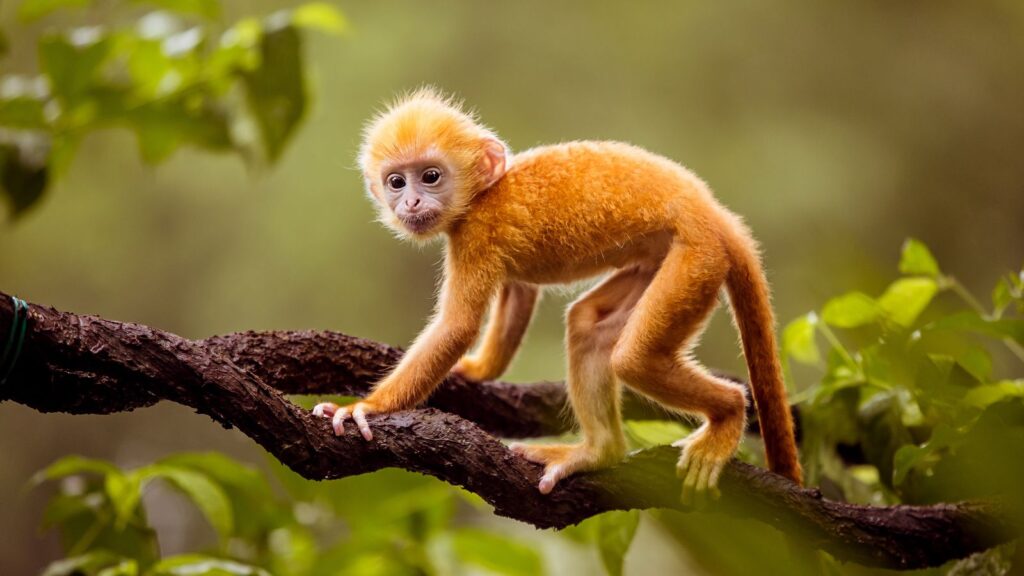Monkeys captivate imagination with their playful antics and remarkable intelligence. Found in diverse habitats across the globe, these fascinating primates exhibit a wide range of behaviors and adaptations. In a similar way, the new normal in remote communication reflects a shift in how societies adapt to changing circumstances, from global health challenges to advances in technology. Just as monkeys demonstrate adaptability in their environments, people have had to embrace new ways of living, working, and interacting, reshaping the landscape of daily life and societal functions.
Drawing:Uqp7yroofp0= Monkey
 Monkey animals, commonly known as monkeys, exhibit diverse behaviors and adaptations. They hold a crucial role in ecological systems and offer a glimpse into evolutionary processes that is shaping the future.
Monkey animals, commonly known as monkeys, exhibit diverse behaviors and adaptations. They hold a crucial role in ecological systems and offer a glimpse into evolutionary processes that is shaping the future.
Monkeys belong to the primate order, featuring two main groups: New World and Old World. They exhibit varied sizes, from the tiny pygmy marmoset at 4.6 ounces to the robust mandrill weighing over 77 pounds. Their primary traits include intelligence, dexterous hands, and complex social structures. Unlike apes, most monkeys have tails, used for balance and communication.
Monkeys inhabit diverse environments, from tropical rainforests to savannas. New World monkeys reside in South and Central America, thriving in arboreal settings. Old World monkeys, found in Africa and Asia, adapt to various habitats like mountains and woodlands. Ecological roles include seed dispersal and pest control, essential for maintaining biodiversity.
The Fascinating Behavior of Monkey Animals
Monkey behavior intrigues researchers due to their complex social structures and communication patterns. Their interactions reveal intelligence and adaptability across diverse environments.
Social Structure
Monkeys exhibit intricate social structures noted by hierarchies and roles. Groups, often called troops, vary in size from a few members to over a hundred depending on species. For example, baboons typically form large, complex groups, while gibbons often live in smaller family units. Leadership usually falls to dominant individuals who maintain order and mediate conflicts. Grooming behaviors strengthen bonds and aid in building alliances within the troop.
Communication Patterns
Communication among monkeys involves an array of vocalizations, facial expressions, and gestures. They use calls to indicate danger, mark territory, or coordinate group movements. For instance, vervet monkeys have alarm calls specific to predators like leopards, snakes, and eagles. Facial expressions convey emotions such as aggression or submission to members of the troop. Certain species use body language, like tail signals, to communicate messages, enhancing their social cohesion and survival in complex environments.
The Role of Monkey Animals in Ecosystems
 Monkeys play crucial roles in maintaining ecological balance. Their activities contribute to biodiversity and influence interactions with other species in their habitats.
Monkeys play crucial roles in maintaining ecological balance. Their activities contribute to biodiversity and influence interactions with other species in their habitats.
Monkeys enhance biodiversity through seed dispersal. By consuming fruits, they spread seeds across large areas, facilitating plant growth and forest regeneration. In tropical rainforests, certain plant species rely on monkeys for this vital process, contributing to diverse plant communities. Additionally, monkeys help control insect populations, either by feeding on them or by being part of predator-prey dynamics, thereby maintaining ecological equilibrium.
Interactions with other species are frequent and significant among monkeys. As prey, they provide sustenance for predators, which forms part of the food web. As competitors, monkeys vie for resources with other frugivorous and omnivorous animals, influencing population dynamics. In some ecosystems, monkeys form symbiotic relationships, such as with birds that alert them of predators, enhancing their survival.
Conservation Status of Monkey Animals
Monkeys face numerous threats in the wild, challenging their survival and impacting biodiversity. Conservation efforts aim to secure a future for these important primates.
 Habitat loss remains the primary threat, driven by deforestation and land conversion for agriculture. The IUCN Red List highlights many monkey species as vulnerable or endangered. Poaching for bushmeat and illegal pet trade further reduce populations. Moreover, climate change leads to habitat alteration, affecting food availability and forcing migration. As human-wildlife conflict increases, monkeys encounter dangers such as vehicle collisions and retaliation from farmers.
Habitat loss remains the primary threat, driven by deforestation and land conversion for agriculture. The IUCN Red List highlights many monkey species as vulnerable or endangered. Poaching for bushmeat and illegal pet trade further reduce populations. Moreover, climate change leads to habitat alteration, affecting food availability and forcing migration. As human-wildlife conflict increases, monkeys encounter dangers such as vehicle collisions and retaliation from farmers.
Governments and NGOs implement measures to protect monkeys and their habitats. Protected areas, like national parks, offer safe environments essential for survival. Legal frameworks restrict hunting, capturing, and trade. Rehabilitation centers care for injured or orphaned monkeys, preparing them for reintroduction. Community-based conservation programs engage local populations in sustainable practices, promoting coexistence and reducing conflict.
Animal World
Monkeys are not just fascinating creatures; they are vital components of their ecosystems. Their behaviors and ecological roles underscore the intricate balance of nature. As humans continue to alter landscapes, understanding and conserving these primates becomes even more crucial. Protecting monkeys means safeguarding biodiversity and the health of the planet.
